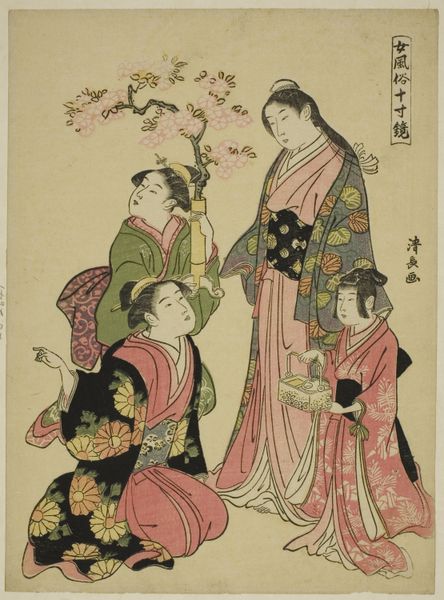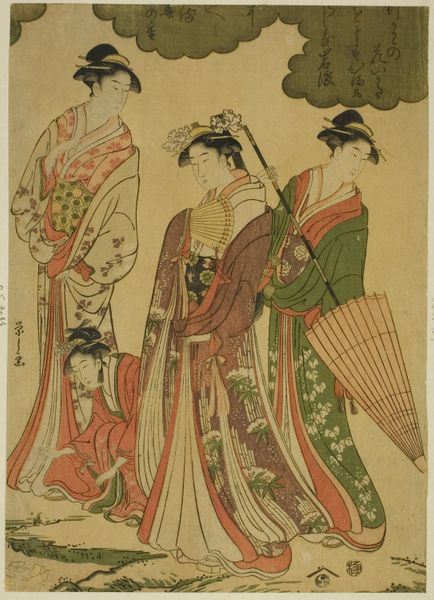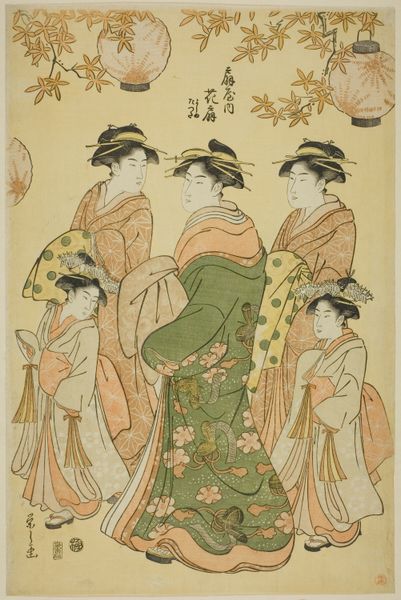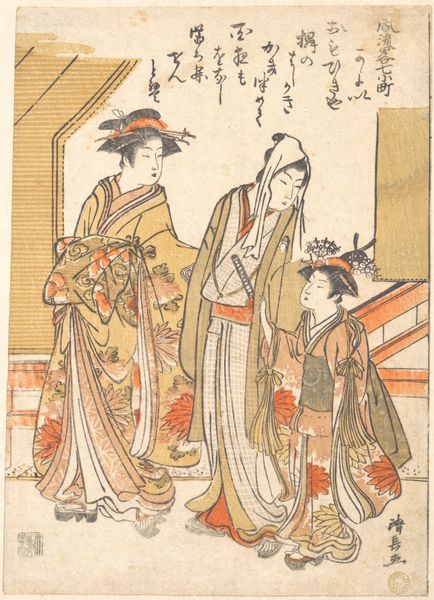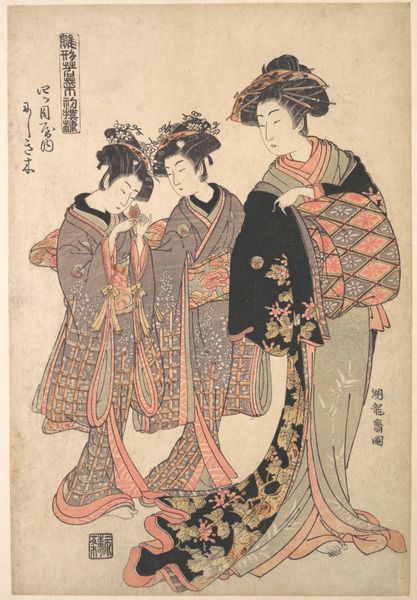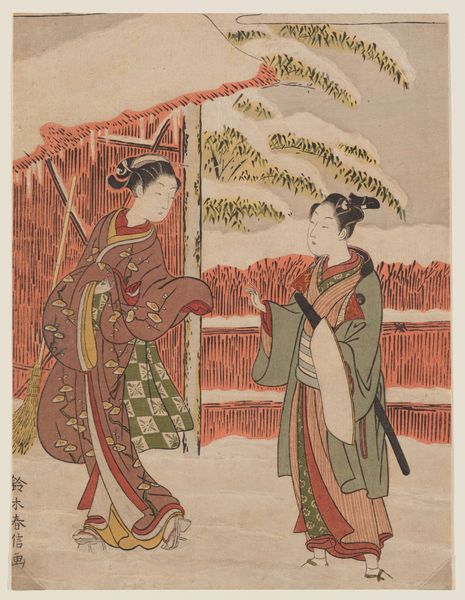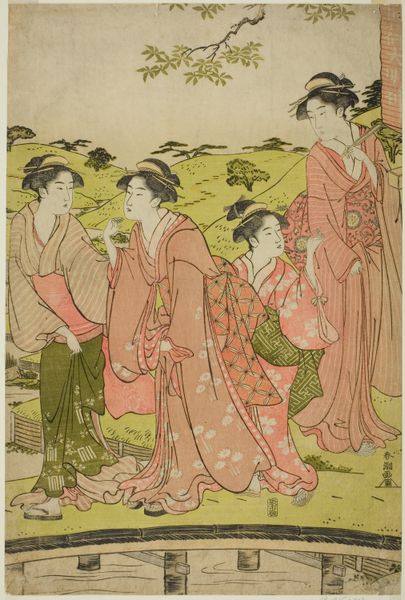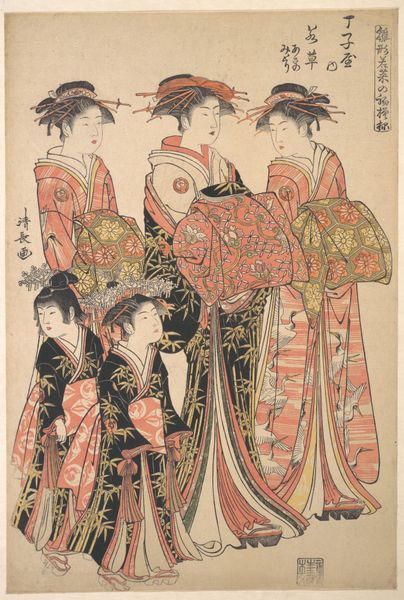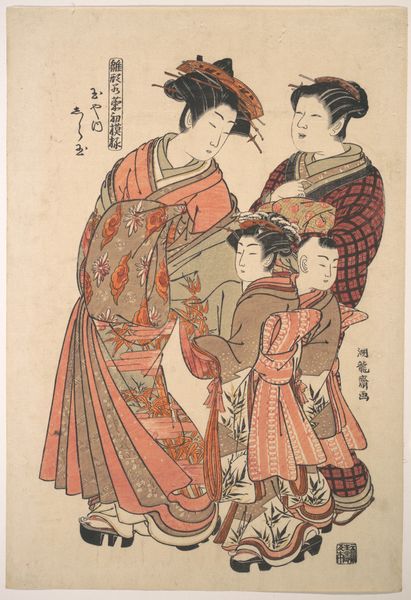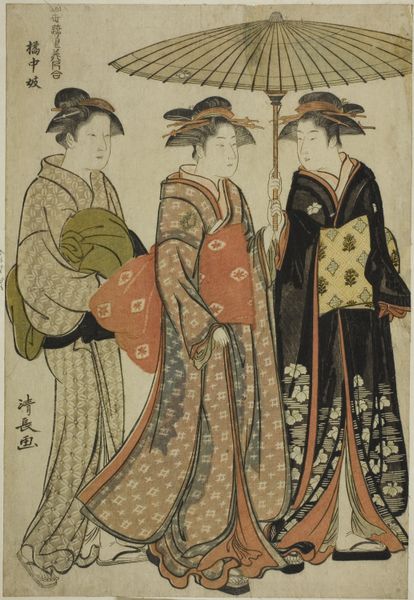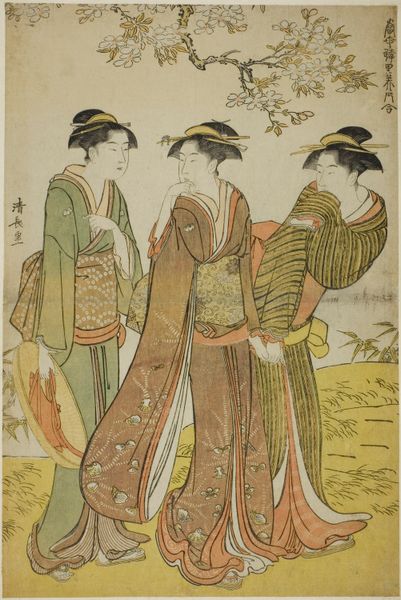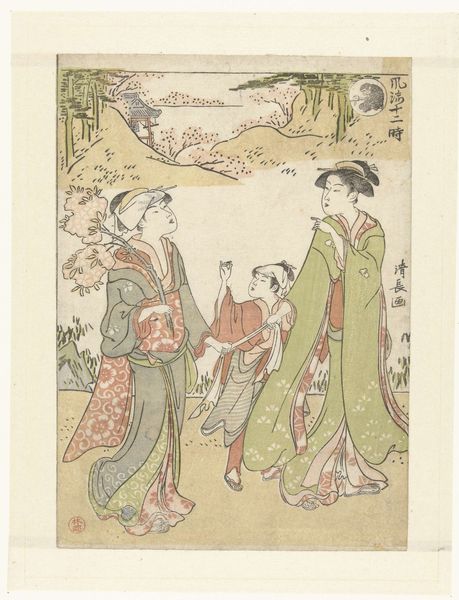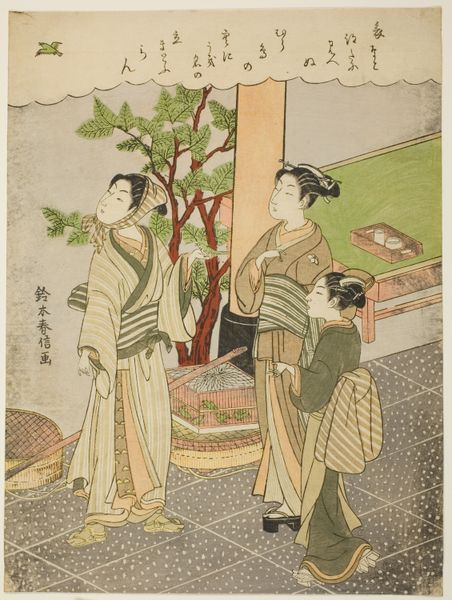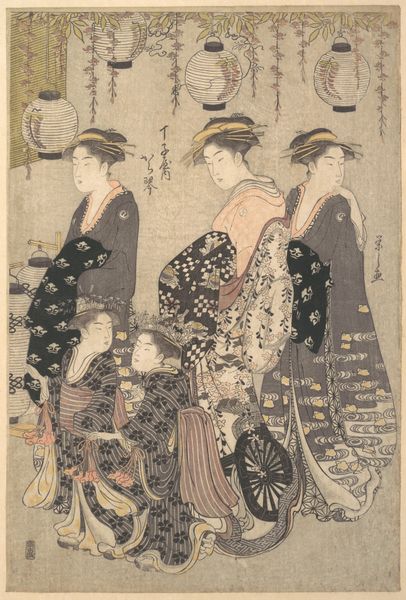
Courtesan and Attendants Parading under Cherry Tree c. 1771
0:00
0:00
print, woodblock-print
#
portrait
# print
#
asian-art
#
ukiyo-e
#
japan
#
woodblock-print
#
genre-painting
Dimensions: 26.3 × 19.8 cm (10 3/4 × 7 3/4 in.)
Copyright: Public Domain
Curator: This woodblock print, now residing at The Art Institute of Chicago, is entitled "Courtesan and Attendants Parading under Cherry Tree," created around 1771 by Komai Yoshinobu. What are your first thoughts? Editor: The patterns! I'm immediately struck by how meticulously crafted each robe appears to be. You can almost feel the texture, the layering of the fabrics involved. Curator: The textiles are indeed quite compelling. Ukiyo-e prints like this offer us insight into the floating world and popular culture of the Edo period in Japan. Courtesans held a prominent, though complex, role within that society. Editor: Complex is right. Consider the laborious, multi-stage printing process—the carving of blocks, the precise inking, the careful registration of colours—to mass produce an image of supposed leisure and opulence. Whose labour created the raw silk for those gorgeous robes and who created the print for popular consumption? There’s more here than just high-class Japan. Curator: Indeed. And the cherry blossoms above act as a visual metaphor, don't they? Transient beauty, mirroring the fleeting nature of life and, perhaps, the courtesan's position. Editor: Exactly! But consider the labour of maintaining cherry trees too - it's easy to just accept these trees as naturally "Japanese". How much labour has gone into that picturesque scene? And this isn’t merely an aesthetic exercise, is it? Prints like these circulated widely, shaping perceptions of beauty, fashion, and social status, contributing to this floating world being bought and sold. Curator: It’s important to also remember the institutional frameworks which shaped art. Publishers commissioned works. Viewing them outside this system risks decontextualization, ignoring its place in the consumer culture of the time. The consumption of Ukiyo-e allowed the merchant class, often excluded from traditional social hierarchies, to participate vicariously in aspects of aristocratic culture. Editor: It’s all interlinked! Material conditions informed by economics inform every aspect, every printed line in this artwork. And that is visible if we bother to truly look at it, not just through our culturally biased perspective on beauty. Curator: Very true. This print serves as a portal into 18th-century Japan, showcasing the complex intersection of beauty, society, and status. Editor: Leaving us much to reflect upon regarding production and society.
Comments
No comments
Be the first to comment and join the conversation on the ultimate creative platform.
